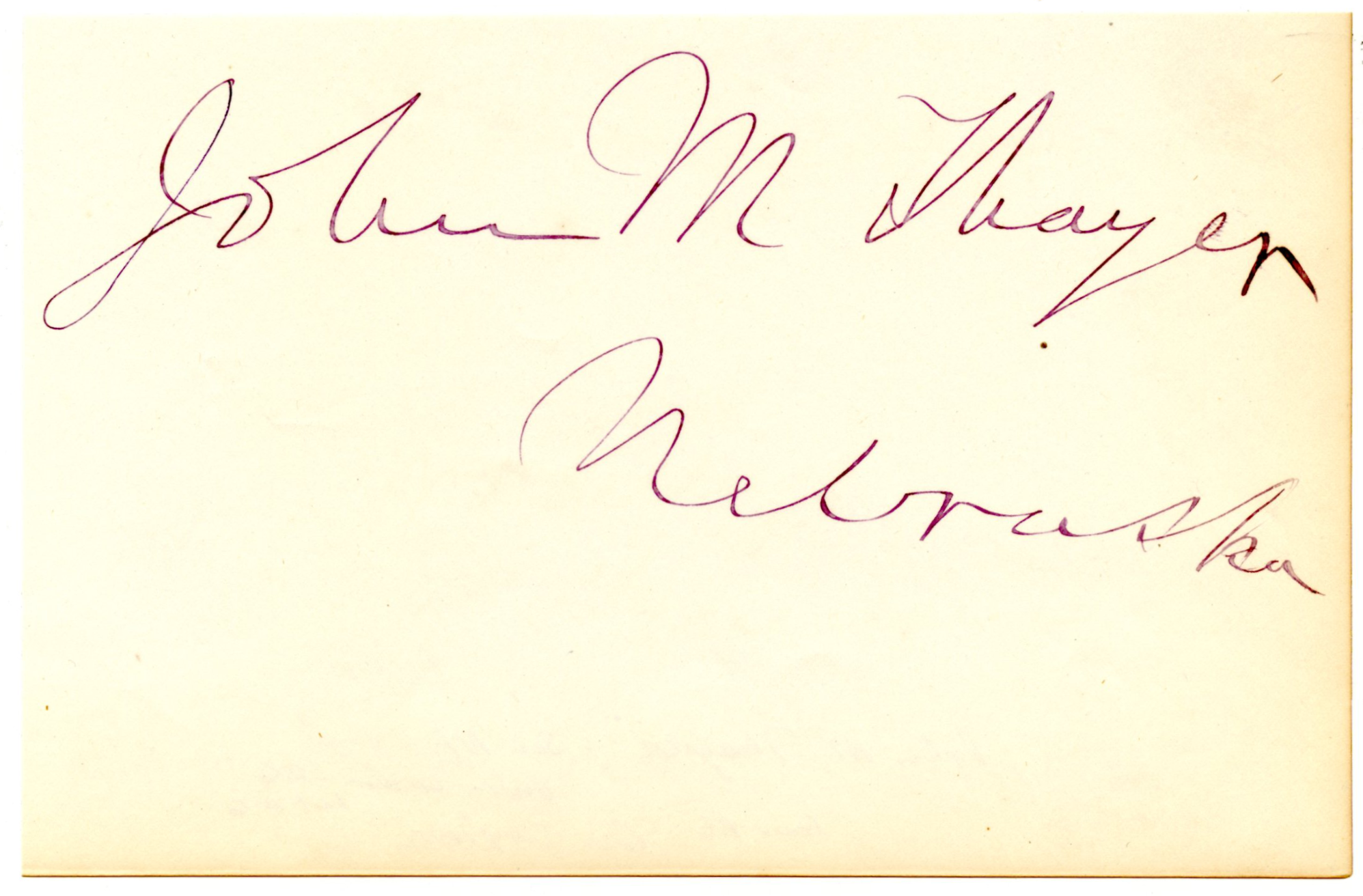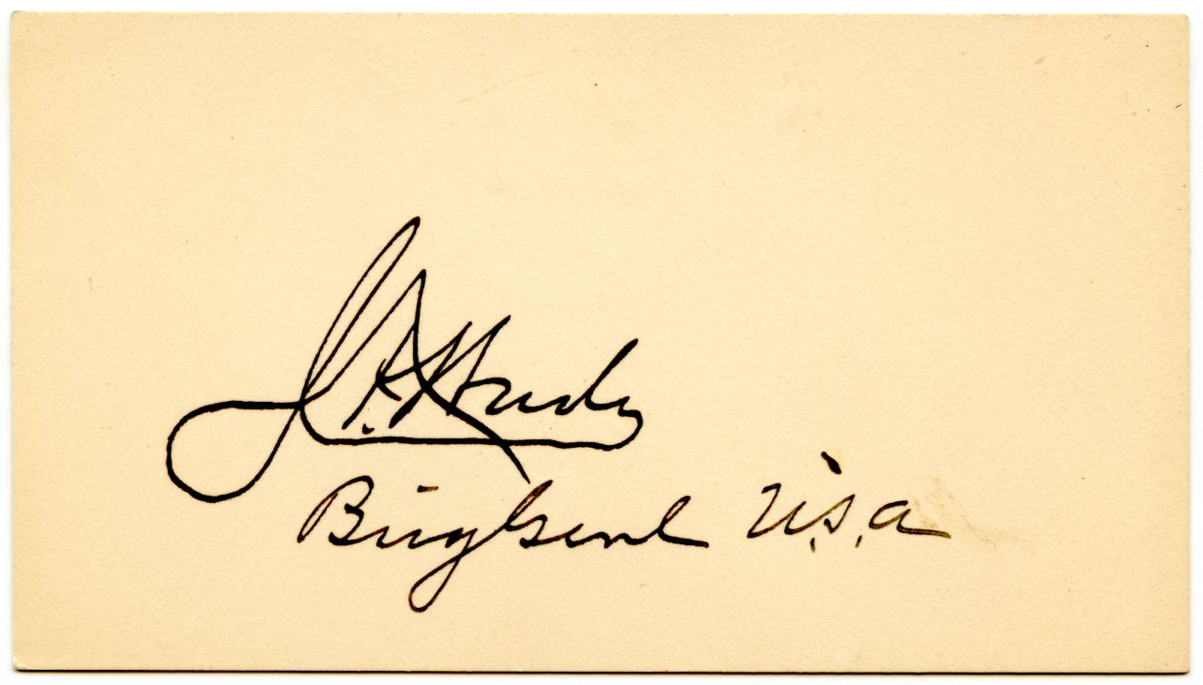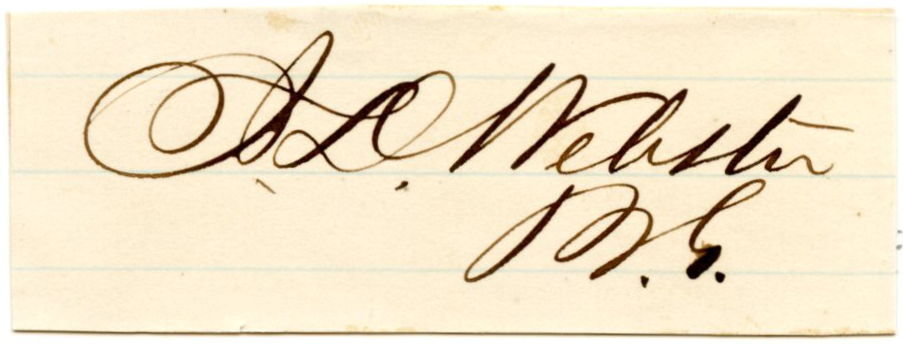New Items
These are our most recently listed items, in all categories.
 SMITH, GUSTAVUS WOODSON (1821-96) Confederate Major General; Veteran of the Mexican War
SMITH, GUSTAVUS WOODSON (1821-96) Confederate Major General; Veteran of the Mexican War
-100.png)
-100.png)
A West Point, New York Postmark
Autograph Letter Signed, 7 ¾” x 9 ¾”. As a young, antebellum U.S. Army officer, Smith communicates regarding the conveyance of funds. Addressed by Smith to a banking company in New Orleans, the integral leaf bears a desirable postmark from West Point, New York, home of the U.S. Military Academy, where Smith was at the time employed as an instructor.
“West Point, N[ew] Y[ork], Dec[ember] 20th 1850.
Messrs. Watts & De Saulles,
Gentlemen,
I received yesterday yours of the 9th Dec[ember], enclosing “original of J. Corning & Co[mpany]’s check on Corning & Co[mpany] New York,” dated Dec[ember] 9th No. 27089 in my favor for five hundred dollars, $500. I will in compliance with your request acknowledge the receipt of the same to M.A. Smith by this days mail.
Very Respectfully Yours,
Gus. W. Smith,
Capt[ain] U.S. Army.”
_________________________
Heavier staining and wear at the edges, with the expected folds and a few chips at the edges; there is significant wrinkling of paper in the lower corners and edges, all well away from the text of the letter.
 TANEY, ROGER BROOKE (1777-1864) Chief Justice of the United States, Supreme Court – 1836-64; Remembered for the infamous Dred Scott Decision; U.S. Treasury Secretary – 1834-35; U.S. Attorney General – 1831-33; U.S. War Secretary - 1831
TANEY, ROGER BROOKE (1777-1864) Chief Justice of the United States, Supreme Court – 1836-64; Remembered for the infamous Dred Scott Decision; U.S. Treasury Secretary – 1834-35; U.S. Attorney General – 1831-33; U.S. War Secretary - 1831

Document Signed, 8 ¼” x 10”, an early manuscript Frederick County, Maryland court filing, recommending the admission of a man as an attorney; docketed “15th February 1811” on the reverse.
“To the Hon[ora]ble the Judges of Frederick County Court. The subscribers appointed by the court to report on the application of Mr. Addison White to be admitted as a member of the Bar, do hereby respectfully certify to the court that it is their opinion Mr. White should be admitted to qualify as an attorney of Frederick County Court. John Harison Thomas. R.B. Taney.”
Exhibiting the usual folds and light toning, with heavier wear, staining, and chipping at the corners and edges.
 THAYER, JOHN MILTON (1820-1906) Union Brigadier General; U.S. Senator – Nebraska – 1867-71; Governor of Wyoming Territory – 1875-78; Governor of Nebraska – 1887-92; Veteran of the 1850s Indian Wars
THAYER, JOHN MILTON (1820-1906) Union Brigadier General; U.S. Senator – Nebraska – 1867-71; Governor of Wyoming Territory – 1875-78; Governor of Nebraska – 1887-92; Veteran of the 1850s Indian Wars

Signature, “John M. Thayer, Nebraska,” an enormous example as U.S. Senator on a 4 ½” x 7” album page.
Excellent, with light, even toning.
 WADE, JAMES FRANKLIN (1843-1921) Union Brevet Brigadier General; Colonel of the 6th U.S. Colored Cavalry; Postbellum service commanding the 9th & 10th U.S. Cavalries, “Buffalo Soldiers”; U.S. Major General - Spanish-American War
WADE, JAMES FRANKLIN (1843-1921) Union Brevet Brigadier General; Colonel of the 6th U.S. Colored Cavalry; Postbellum service commanding the 9th & 10th U.S. Cavalries, “Buffalo Soldiers”; U.S. Major General - Spanish-American War

Signed Card, 2 ¼” x 4”, with rank, “J.F.Wade, Brig[adier] Gen[era]l U.S.A.”
Excellent, with light, even toning.
 WARREN, FITZ-HENRY (1816-78) Union Brigadier General; Colonel of the 1st Iowa Volunteer Cavalry; U.S. Minister to Guatemala – 1867-69
WARREN, FITZ-HENRY (1816-78) Union Brigadier General; Colonel of the 1st Iowa Volunteer Cavalry; U.S. Minister to Guatemala – 1867-69

Signature, “Fitz Henry Warren,” on a 1” x 2 ½” portion of a document as “SECOND ASSISTANT POSTMASTER GENERAL.”
Affixed to larger backing.
 WEBSTER, JOSEPH DANA (1811-76) Union Brigadier General; Early-war service as chief of staff for General Ulysses S. Grant; Veteran of the Mexican War
WEBSTER, JOSEPH DANA (1811-76) Union Brigadier General; Early-war service as chief of staff for General Ulysses S. Grant; Veteran of the Mexican War

Signature & Rank, “J.D. Webster, B[rigadier] G[eneral],” on a 1” x 3” slip of lined paper.
Lightly and evenly toned, with old hinge remnants on the reverse.
 WHIPPLE, WILLIAM DENISON (1826-1902) Union Brigadier General during the American Civil War; Staff Officer for Generals George H. Thomas & William Tecumseh Sherman; Veteran of the Yuma & Navajo Wars
WHIPPLE, WILLIAM DENISON (1826-1902) Union Brigadier General during the American Civil War; Staff Officer for Generals George H. Thomas & William Tecumseh Sherman; Veteran of the Yuma & Navajo Wars
-100.png)
-100.png)
Signature & Rank, “William D. Whipple, B[re]v[e]t Maj[or] Gen[eral] U.S. Army,” on a 3 ½” x 5 ¾” album page, with the signature and rank of Union Brevet Brigadier General Joseph Walter Burke on the reverse: “J.W. Burke, Col[one]l 10th Ohio Inf[an]t[r]y & Brevet Brig[adier] Gen[era]l Vol[unteer]s.”
Lightly and evenly toned, with several light creases; chips and pinholes at the formerly bound edge.

-1995.png)
-1995.png)





-1796.png)
-1806.png)